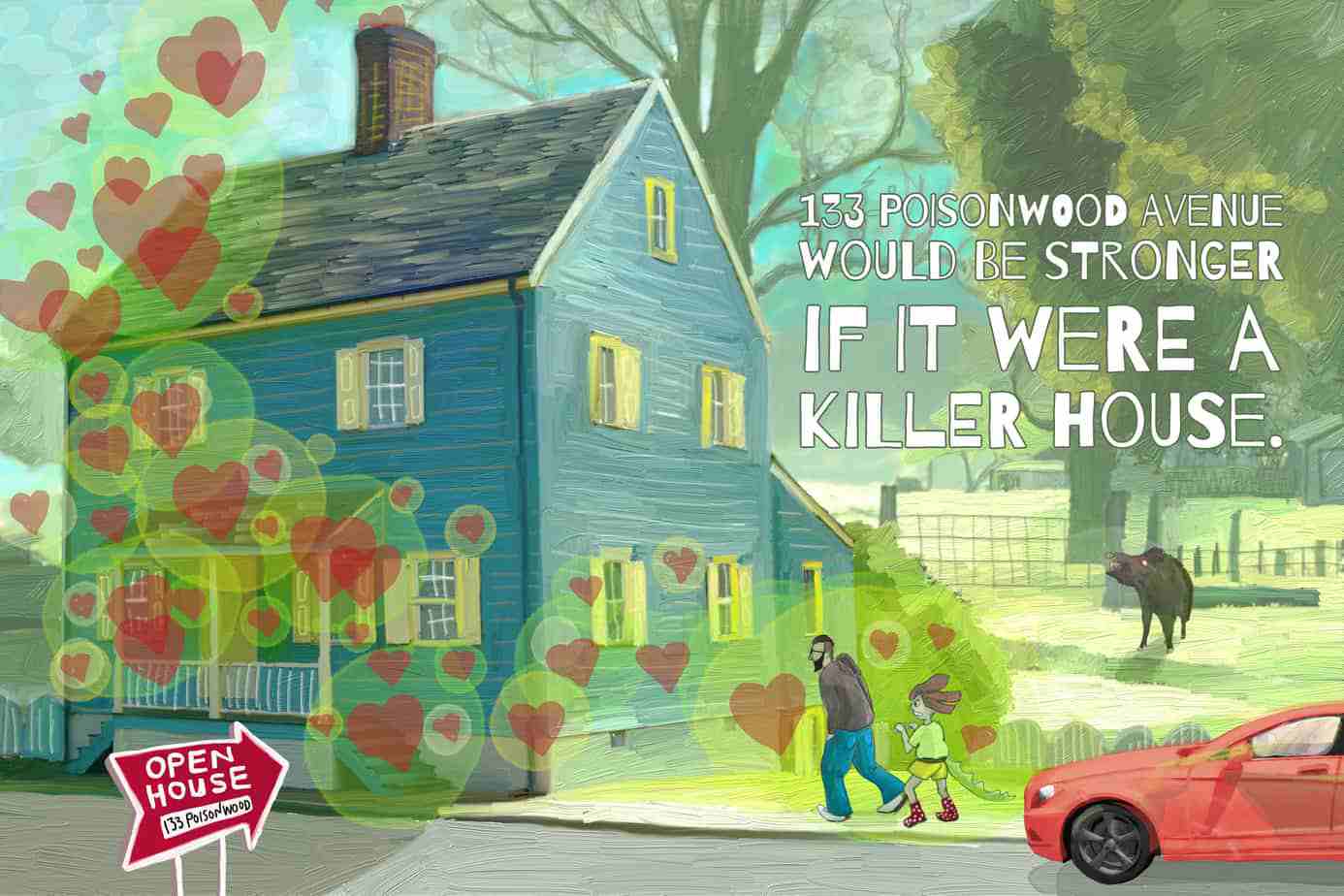“Open House on Haunted Hill” is a Nebula Award winning short (ghost?) story by John Wiswell, published in 2020. I’ve recently immersed myself in ghost stories from the 18- and 1900s. But how does one go about writing a contemporary ghost story?
Listen to this story read by Levar Burton on the Levar Burton Reads podcast.
Can modern writers still write an original and surprising ghost story? I mean, haven’t all the ghost tropes been done to death? Aren’t modern audiences super well-schooled in these tropes, if not from primary sources then from pop-culture descendants?
John Wiswell allays these particular fears. “Open House on Haunted Hill” may sound like a Shirley Jackson pastiche…
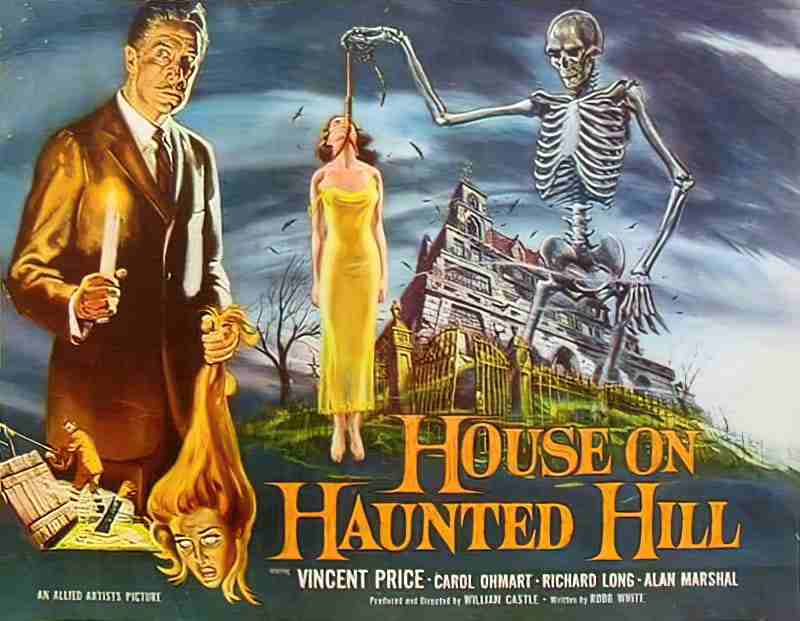
or a 1980s horror film…
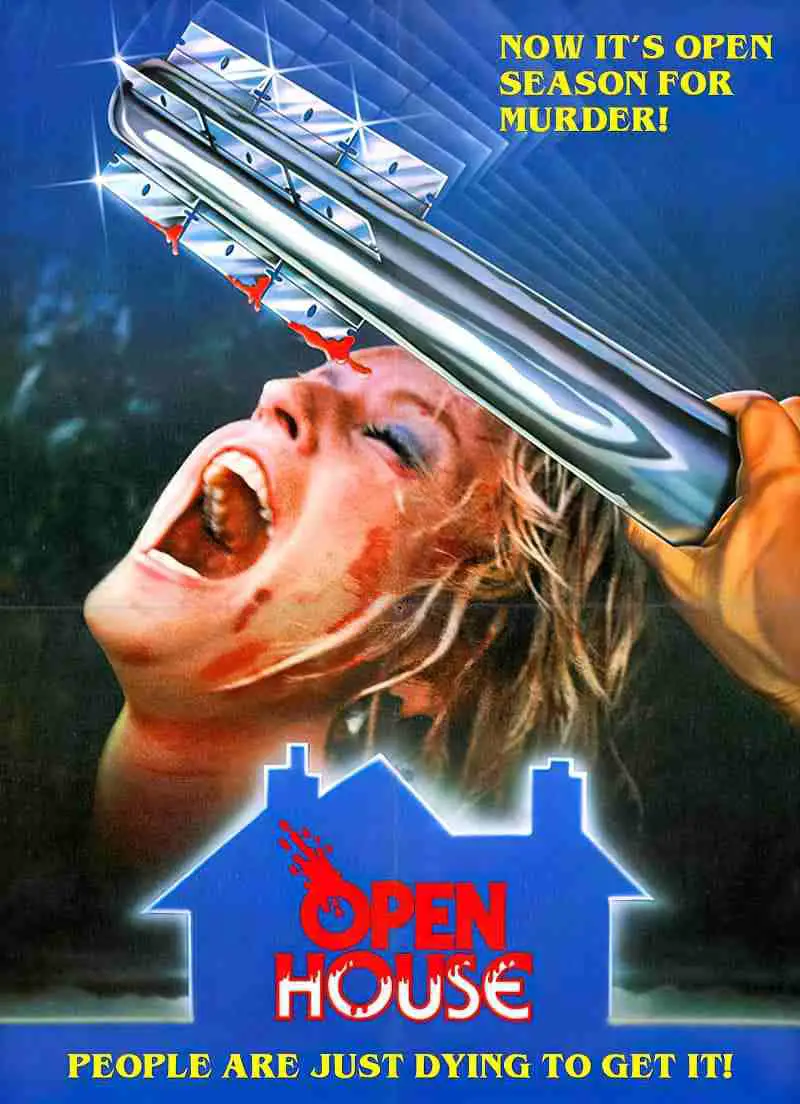
But this is one of the kindest most original ghost stories you’ll read. If you’re in the mood for kindness (and who isn’t?), jump right in.
The 3000 word story is posted at Diabolical Plots.
SETTING OF “OPEN HOUSE ON HAUNTED HILL”
PERIOD
The first thing I notice is that this story is set firmly in the present. There’s no attempt to paste a historical sensibility onto the present.
The father is a single dad who works in IT and produces his own podcast. It’s a skeptic podcast, no less. (And that’s all we need to know about him! Ha.)
When did real estate agents start with the open houses as a marketing technique? (The history of open homes is a lot longer than I thought.)
Open homes are great for storytellers. They’re so stressful. The private temporarily becomes public. Open houses appeal to the voyeur in us, and after all, what is fiction-reading if not an act of benign voyeurism? There’s also that common fear of the penetrable home. We like to think our homes are for family and close friends only, but stories from antiquity evince an age-old fear of the demon coming down the chimney or in through the windows and doors. The open home is the real-world symbolic equivalent to opening your private sphere to potential evil. Stories about evil nannies are good at throwing an extra veneer of misogyny over anxieties around the penetrable home.
The writing team of Breaking Bad used the open home to great effect when Walt and Jessie forget about a scheduled open day which just so happens to coincide with them holding a hostage in the basement. Later, Walt and Jessie infiltrate other people’s private space when they cook meth under the cover of an authorised bug spray via Vamonos Pest in “Hazard Pay” (2012).
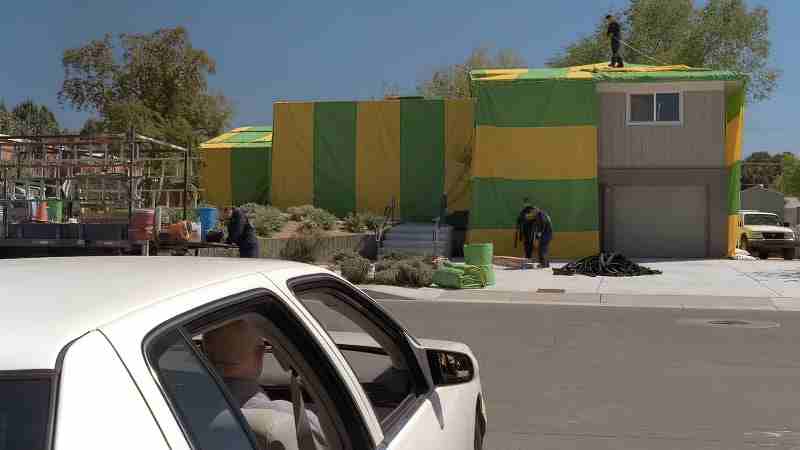
This plot plays into our collective fear of home invasion, and Breaking Bad explores it from various angles. The threat of home invasion undergirds audience anxieties even when storytellers have made sure we’re following the exploits of the invaders, not the invaded.
DURATION
“Open House on Haunted Hill” covers only the length of an open home visit but because the narrator is the house, and the house has a long history, the author achieves a sense of permanence and relevance.
LOCATION
This is America. I initially imagined a more built up area. Then I got to thinking it’s maybe more toward the edge of civilisation. They are a little slow to get fast Internet (assuming a contemporary setting).
ARENA
The entire story plays out inside a single house with a brief reference to another haunted house at the beginning. Ghost stories can sometimes be a little difficult to get into. First the author mentions one house, then immediately mentions another. Charles Dickens did this in “The Signalman” (not the same thing exactly): discombobulating the reader. This is how the characters feel.
Later in the story, the father feels the daughter’s vertigo (without knowing he’s feeling his daughter’s vertigo). See also: Disorientation and Spatial Horror. Except in this story, spatial horror is an act of empathy. (See what I mean by a kind story?)
LEVEL OF CONFLICT
In “Open House on Haunted Hill”, the narrator is the house itself, commenting omnisciently on the characters who come inside. Generations of storytellers have primed audiences to expect that houses do not like to be invaded. Houses hate change and exact revenge on newcomers.
Anything other take on this plot is a subversion. Whose side is this house on?
THE EMOTIONAL LANDSCAPE
This refers to the land which lives inside the main character: The imaginative landscape, the difference between what is real in the veridical world of the story and how a character perceives it — never exactly as it is, but rather influenced by their own preconceptions, biases, desires and personal histories.
The father of this story is a skeptic. But unusually for a ghost story featuring a skeptic main character, the events which play out don’t prove him wrong, but rather support various ways of looking at the world.
CAST OF CHARACTERS
MRS WEISS THE REAL ESTATE AGENT
Mrs Weiss is the realtor conducting the open home. She is a ‘fake mother’: The trays of food she puts out are ‘store-bought’. The homely aroma comes from a hidden scent dispenser.
I have been primed to despise fictional real estate agents. But there’s more to my initial suspicion of Mrs Weiss than ‘real estate agents’. Whenever a fictional character sets about ‘covering things up’ (even if it’s a part of their actual job), they are almost always ‘found out’ by the end of the story. Or, unmasked. That doesn’t happen here, which is partly what makes this ghost story so original. Mrs Weiss turns out to be a regular lady doing her real estate job, helping people to find their homes.
“THE REAL ESTATE”
This house has a triangular roof with a shingle roof, is heated with oil and has painted vintage silk wallpaper. The last permanent owner died there in 1989. This house was probably built in the early 1900s or before. The house is shaped like a hierarchical triangle, with a spacious basement but only enough room for one bedroom under the roof. (Think Maslow’s hierarchy, with basic needs in the basement — a hierarchy misappropriated from Native Americans.) The basement is only half underground, but most of the living space seems to be down there. (In my illustration up top I think I’ve got one too many storeys. I couldn’t be arsed changing it by the time I realised. Also I’ve drawn a wild hog but it should really be a groundhog. I’m leaving it because I think there might also be wild hogs.)

Intriguingly, ‘every decent haunted house has at least one secret room’. There’s a Tardis effect going on, with an ‘expansive window that hasn’t been seen from the outside in over twenty years’.
Suspense throughout this narrative derives from the fact we don’t know what the house is planning. Is the house a goodie or a baddie? (We expect bad.)
When an object is compared to a person we call it an example of personification:
The house straightens its aching floorboards, like a human sucking in their belly.
By the way, when it happens the other way around (a person compared to an object) it is called chremamorphism. Once you start noticing it, you find chremamorphism is surprisingly common in literature.
Interesting fictional characters — houses, objects or otherwise — have some kind of desire and this desire is made apparent to the reader.
The house would love nothing more than any of them to spend the rest of their lives tracking mud into it.
This is an interesting unexpected response. We’d expect a sentient house to not enjoy strangers trekking mud through it all the while taking no interest in the house (in attendance for the food). Emphasis is on ‘forever’. Like the house at 35 Silver Street (with a vampire adjacent name), this house can presumably suck people into its bones forever.
The Open Home is a poor replica of Real Home, same as a Hotel California type situation, which never lets its visitors leave. (See, for instance, “The Bus” by Shirley Jackson, or the pilot episode of Courage The Cowardly Dog, which spoofs the trope.)
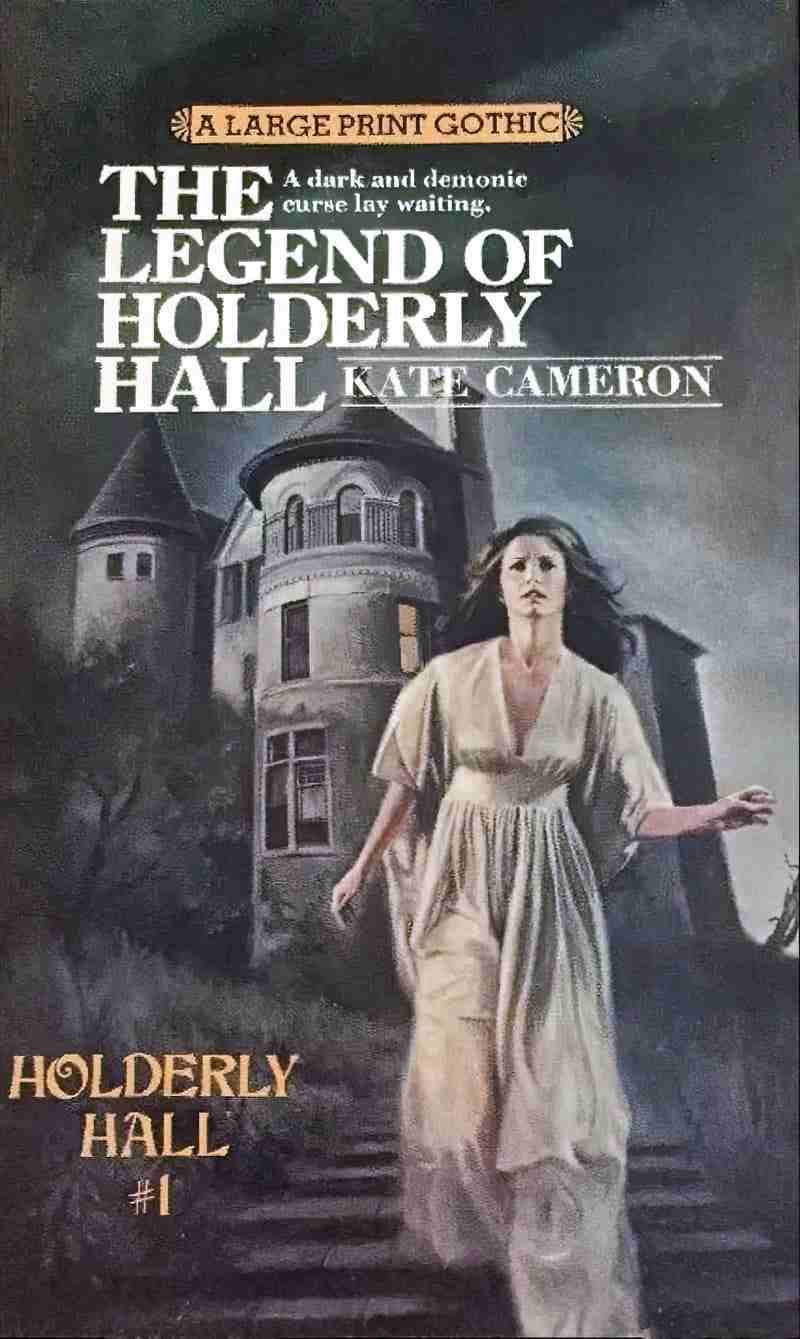
We are told in the opening sentence that this house is not evil, but I for one don’t believe the narrator, who is the house itself. (Don’t know about you, but I don’t take a talking house at face value.)
The first real clue we have about whether the house is evil or benevolent: The house blows the door shut to keep the heat in, because heating oil is expensive. But could this be a little bit of nice before the malevolence? Next it’s going to clinch a sale ‘for them’. WHO ARE THEM. (See how suspicious I am?)
THE AFFLUENT COUPLE
There’s a rich couple to contrast against the schlubby guy who becomes the focal character of this story:
The couple made the mistake of saying they were “thinking of thinking of conceiving,” and Mrs. Weiss wields statistics about the school district like a cowboy wields a lasso.
THE FATHER (ULISSES)
A heavyset man with sagging shoulders lets himself in. He has a bit of brownie smudged against the back of his parakeet green hoodie, and doesn’t seem aware of it.
This guy looks at ‘the couple of ripples in the green floral wallpaper, with the expression of something looking at his own armpit’. From the get-go, the man and the house are cosmically connected.
Is there any significance to the father’s name, only mentioned by the real estate agent near the end? Perhaps. Ulysses is the Roman version of Odysseus, the perhaps fictional Greek King of Ithaca and the hero of Homer’s epic poem the Odyssey. Even if you haven’t read “The Odyssey”, this was a hugely influential epic and has informed story structure for 3000 years: A hero goes on a journey, meets a variety of allies and opponents along the way, then either returns home a changed man or finds a new home.
THE DAUGHTER (ANA)
A child stomps in through the front door, her frizzy hair in three oblong pigtails she probably did herself. A silver keepsake locket clashes with her bright green Incredible Hulk t-shirt. Her elbows are tucked into her chest, hands out like claws, stained with brownie bits.
When Ana rips off her t-shirt I recall the first essay in Ivan Coyote’s 2012 autobiography One In Every Crowd. Perhaps this is partly why I immediately code this kid as non-binary. Of course, she could simply be a little cis girl who happens to reject cultural conventions for girls (like keeping your shirt on, and playing princesses rather than stomping dinosaurs).
Like animals and other small children across supernatural storytelling, Ana understands immediately that the house is haunted.
WRITING TECHNIQUE: THE DIFFERENCE BETWEEN EXPLANATION AND CONFIRMATION
Ana’s wearing a locket and the author keeps mentioning it. We know it’s going to be important. It probably contains a picture of Ana’s dead mother.
Here’s something I’ve noticed time and again in good stories: Confirmation. In this example, the author gives us more than enough clues to let us know what’s inside the locket, but he does eventually tell us outright in the conversation between Mrs Weiss and Ulisses. It’s difficult as a writer to know when to entirely trust your reader to get things, and when to explain.
Some writers err on the ‘too explainy’ side in first drafts. My own first drafts don’t tend to offer enough. I regularly have to go back in and tell the reader, ‘Yes, you were right. There’s a picture of Ana’s mother inside the locket’.
Readers like to know what’s inside things. Even when they can guess, they like to have it confirmed. Takeaway point: Telling readers what’s inside the locket is a confirmation, not an explanation.
ANA’S DEAD MOTHER AND DOROTTYA BLASKO
In many stories, a character who isn’t there is an important character all the same. In this case we have the little girls’ dead mother, who Ana conflates with the dead old lady who used to live in the house and died here back in 1989.
Importantly, Mrs Blasko died peacefully, using her own house as hospice. If she’d died in violent circumstances we’d have a different kind of story.
The author tells us Mrs Blasko was a seamstress and she used the secret room for sewing, so her family couldn’t bother her.
Whenever women sew, there’s a historical connection to a matrilineage which goes back a long, long way. Witches are frequently depicted sewing, or messing around with needles and spindles. By contemporary conception, medieval witches were ‘spinsters’. (This wasn’t actually the case. Many women murdered during the Witch Craze were married with children.)
For some reason Ana’s mother also had an old-fashioned spinning wheel. (Is this kid the offspring of a contemporary “Sleeping Beauty“?)
The term ‘fairytale’ is often used as an epithet—a fairytale setting, a fairytale ending—for a work that is not in itself a fairy tale, because it depends on elements of the form’s symbolic language.
Marina Warner (2014)(xviii)
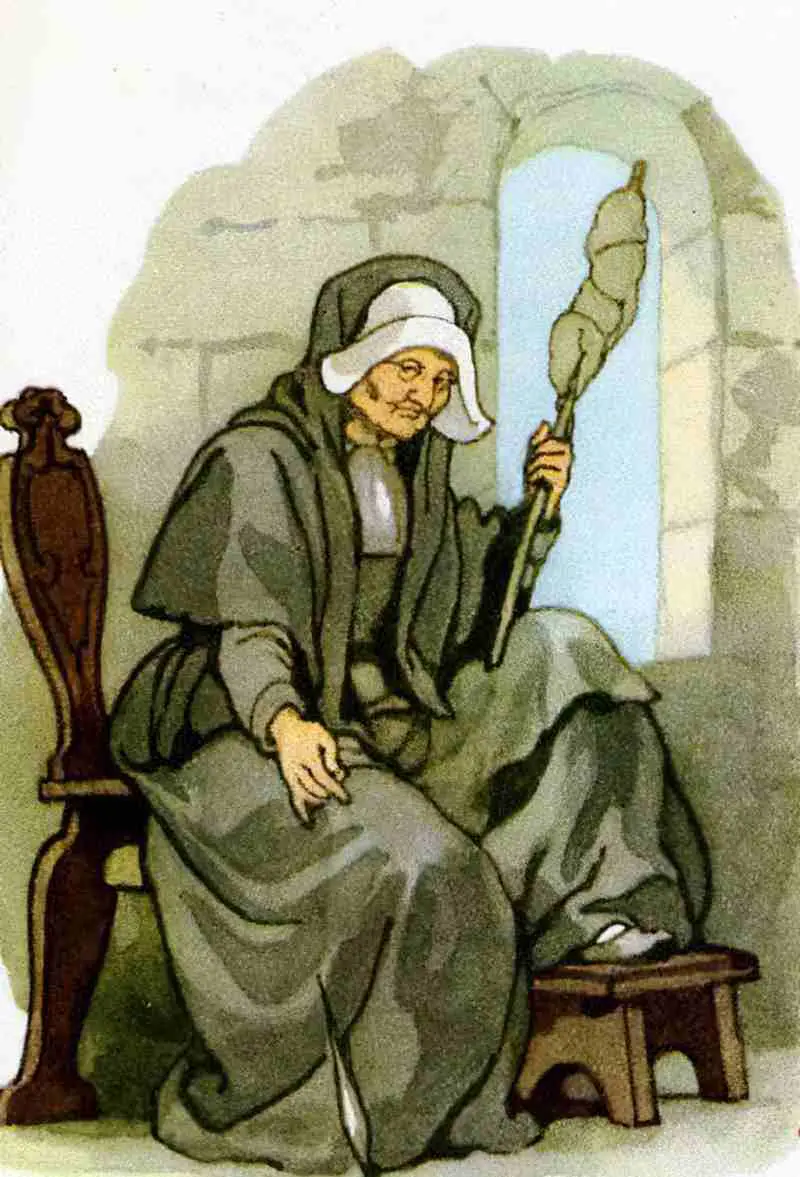
Even when a contemporary story is not based obviously on a tale from antiquity, readers come subconsciously primed. There’s a SPINDLE in the BASEMENT? Watch out! Anyone who’s ever seen or read a single witch story, or a single story with a basement will recognise the allusion (without necessarily knowing what the hell ‘allusion’ means), and knows to be on high alert.
This is the author pranking us, though. As we soon see, the house is not evil.
STORY STRUCTURE OF “OPEN HOUSE ON HAUNTED HILL”
PARATEXT
The title of this story is architextual.
Architextuality refers to stories in which the paratext (in this case the title) positions the story inside an established category. From the title, readers expect a haunted house story.
SHORTCOMING
THE FATHER
Classic ghost stories frequently send a man of learning and logic in to a supernatural situation. “The Signalman” by Charles Dickens is just one example of this. Why? Is it to poke fun at (genuine) skeptics? (And by genuine I mean people who look to science before forming an opinion.)
I’ve always found this aspect a little alienating about ghost stories. I’m heartily sick to death of people who avoid science facts but who nonetheless still claim knowledge around how climate change is a hoax and vaccines don’t work anyway.
Why do storytellers set up the skeptic as the victim in a ghost story? Are they trying to give oxygen to the anti-science populace, and even if they’re not trying, is that an unintended consequence? I notice one commenter at Diabolical Plots has this to say:
I like the concept, but the story feels like a heavy-handed attempt to mock skeptics/atheists.
Isaac
THE HOUSE
It becomes clear near the end (in case we miss it) that the house is lonely and simply wants someone to inhabit it. The house will take anyone who will have it, rejected at every turn by people who misunderstand its intentions.
The house would take a phantom for an inhabitant at this point.
DESIRE
What does the house want? The author leaves this as a reveal. Readers wonder if it’s going to suck up the father and daughter, or refuse to let them leave.
The house is lonely. Likewise, the father is lonely, freshly widowed (a deduction). (They weren’t technically married yet.) The house and the father are therefore perfect for each other.
OPPONENT
Throughout the story we don’t know if the house is an opponent or ally. The realtor is a bit of a proxy opponent. She’s not exactly standing in the way of this man getting what he wants (a house) but she is sufficiently unappealing as a character to make us think not everyone’s going to get on hunky dory.
PLAN
The house is only able to do subtle hauntings but uses its supernatural forces to cocoon and help and persuade the widower and his daughter into its safety.
THE BIG STRUGGLE
Ana is messing around with the spinning wheel when it tips over and hurts her. Unusually for a haunted house story, this isn’t some supernatural force at work. She hurts her hand, which becomes covered in blood. Cue a classic horror scene with bloody child-sized handprints everywhere. Except this time it happens not because of malevolence, but because the child is trying to set the spinning wheel upright again. Everyone in this scene has good intentions.
ANAGNORISIS
Even with the best of intentions all round, bad things happen to good people. This is the audience revelation.
Unusually for a haunted house story, it’s the house itself which experiences the character revelation:
The phantom door’s hinges and knob tremble as 133 Poisonwood fights itself. In that moment it knows what makes other homes go evil. The killer houses can’t bear to be alone.
We can now legit argue that the haunted house is ‘the main character‘. I would even go so far as to say that the house is the building manifestation of the father.
NEW SITUATION
And this is how we know the father has found ‘his’ house.
“Open House On Haunted Hill” bears similarities to a picture book called Over The Shop by JonArno Lawson and illustrated by Qin Leng:
- There’s the metaphorical queer representation
- The building which functions as a character in its own right
- The plot point in which the ‘right’ people turn up and almost leave. In both stories, the audience understands that the building fits the people perfectly and it is gut-wrenching to see them almost miss out on finding their perfect home.
EXTRAPOLATED ENDING
Is this one of those ghost stories that pokes fun at skeptics? No, I don’t believe so. Even this aspect of the ghost story is a subversion. At the end of “The Signalman”, the logical skeptical wanderer understands that something bigger than himself is at play. But not in this one. The house isn’t teaching him a lesson:
But he doesn’t need to believe in hauntings.
Does this change the covert message, though? Does it matter if the skeptic learns the error or his logical ways when the story itself points out his lack of supernatural understanding to readers?
Ghost stories aren’t about ghosts. In good ghost stories, the ghosts convey bigger ideas about workaday human experiences. (Remember, not even the house believes in ghosts.) The haunted, talking house is a narratorial trick. For the skeptical reader, this a story about a man and daughter finding a new home after great loss, and the way a home can seem to enfold you in its arms when it feels familiar.
RESONANCE
The author is himself aro/ace (aromantic and asexual). There is nothing on-the-page ace about this story, but the ace community will see asexuality written all over it:
“You don’t have to look for things that aren’t there.” […]
It’s like he doesn’t feel the vibes other visitors do, or he doesn’t care about them.
This is an allegory of a man who falls in love in a different kind of way because he looks for different things. While the normies (the rich people) look at the bones of the house and its proximity to schooling, ‘Daddy plays an even worse sleuth, deliberately checking around empty hallways’.
Many in the autistic community would also identify with a story about a character who moves differently through the world.
I’m reminded of what Emily VanDerWerff said on Twitter recently (in a conversation about trans representation in Midsommar):
I increasingly think “explicit” queer representation has less value than metaphorical queer representation. […] Explicit queer representation is a trap. It too easily makes queerness a fixed constant — you figure yourself out, and there you are. […] I am MUCH more likely to see myself via METAPHORICAL queer representation.
@emilyvdw on Twitter
Not all ace people identify as queer, but my point is this: People trained in close reading (obviously this includes critics) look for metaphorical representation in their fiction. I’m not convinced every consumer of fiction does this, but we are increasingly becoming a population who collectively does. The last decade has seen a shift from pop culture reviewers telling us what to watch to explaining to us what we have just watched. All of us reading about our favourite shows are now getting English lit lessons without even knowing it. As a result, I expect audiences will become more and more sophisticated, and storytelling will continue to reflect this sophistication.
The other point I’d like to make is this: We need diverse voices published more widely, even when those diverse voices don’t seem — on the surface, to the majority — to be writing anything to do with their own identities. Queer people don’t have to write stories about on-the-page queer characters. Queerness is a mindset, a way of being. A non-normie way of viewing the world will manifest in whatever non-normies do.
And if you want a subverted take on an old story, please, commission (or read) a marginalised voice.♦
